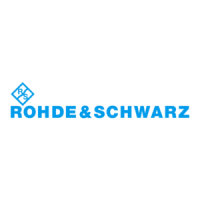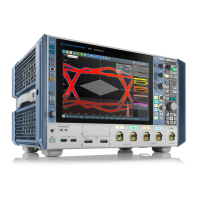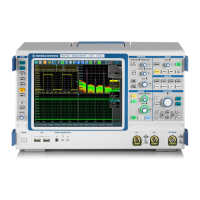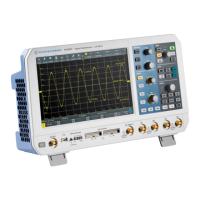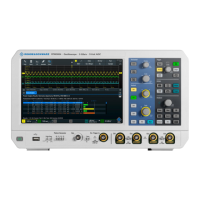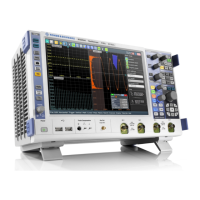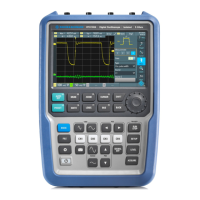Power analysis (option R&S RTE-K31)
R&S
®
RTE
1006User Manual 1326.1032.02 ─ 20
To measure and display the power quality, the instrument uses the following measure-
ments and waveforms:
●
"Meas 7" to measure the input power waveform
●
"Meas 8" to measure the output power waveform
●
"M2" Math 2 to calculate the input power
●
"M3" Math 3 to calculate the output power
The used resources are listed in the "Details" tab. See also: Chapter 16.2.3, "Details
tab", on page 966.
"Power Efficiency" is a statistical evaluation that is reset only if the measurement setup
is changed or you reset the statistics.
The following remote commands are used for handling the measurement results:
●
POWer:EFFiciency:RESult<m>:ACTual? on page 1971
●
POWer:EFFiciency:RESult<m>:AVG? on page 1971
●
POWer:EFFiciency:RESult<m>:EVTCount? on page 1971
●
POWer:EFFiciency:RESult<m>:NPEak? on page 1971
●
POWer:EFFiciency:RESult<m>:PPEak? on page 1971
●
POWer:EFFiciency:RESult<m>:RMS? on page 1971
●
POWer:EFFiciency:RESult<m>:STDDev? on page 1971
●
POWer:EFFiciency:RESult<m>:WFMCount? on page 1971
●
POWer:EFFiciency:REPort:ADD on page 1971
16.5.4.2 Configuring power efficiency
For details of the configuration settings, see Chapter 16.5.4.3, "Power efficiency set-
tings", on page 1007.
1. Select "Analysis" > "Power".
2. Under "Power Path", select "Power Efficiency".
3. Connect the differential voltage probes and the current probes to the oscilloscope.
4. Deskew the probes as described in Chapter 16.1.1.1, "Auto deskew", on page 955.
5. Connect the probes to the DUT as shown in the graphic of the "Channels" tab:
Power path
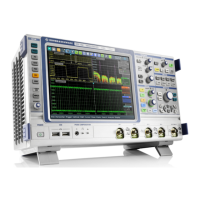
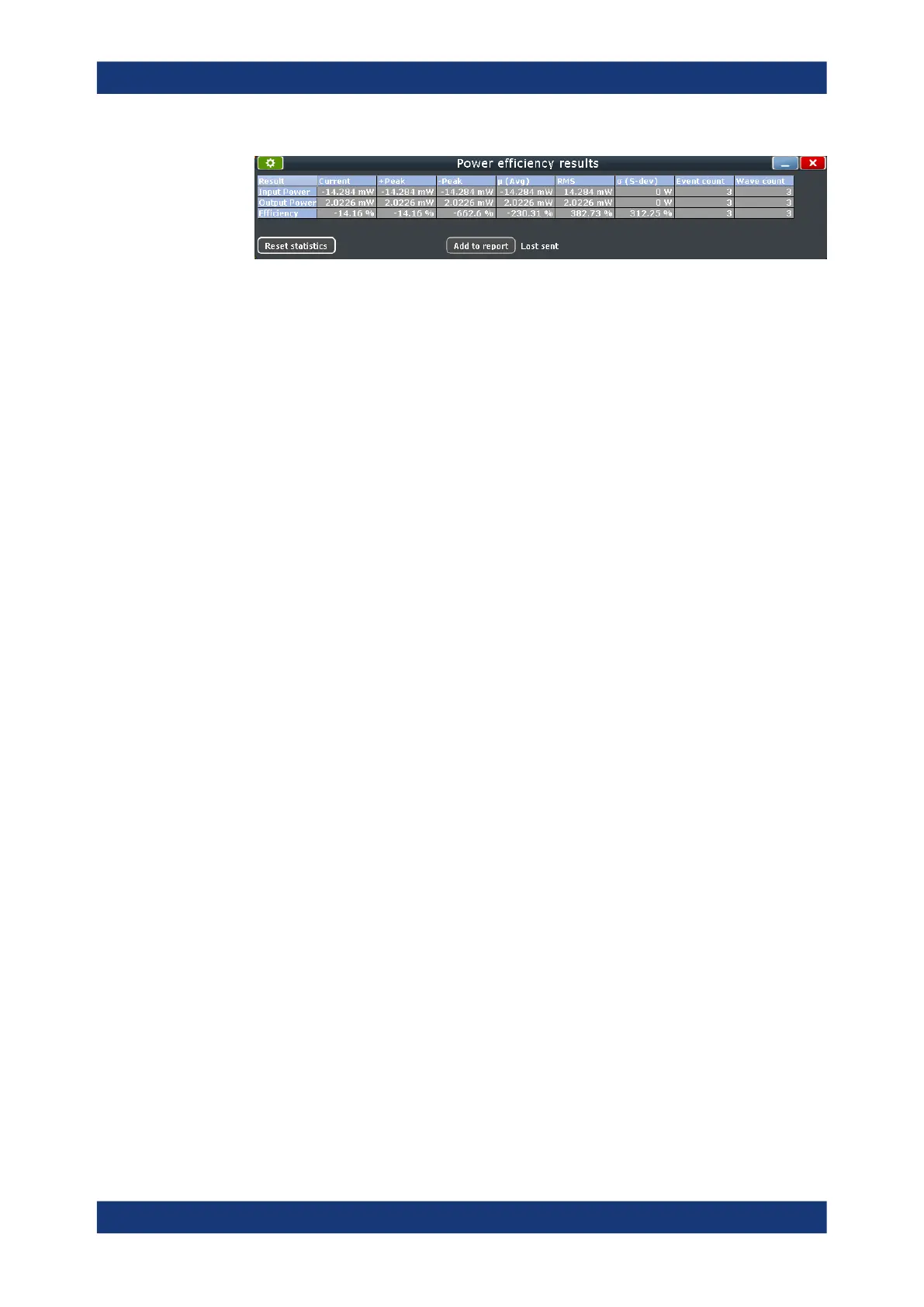